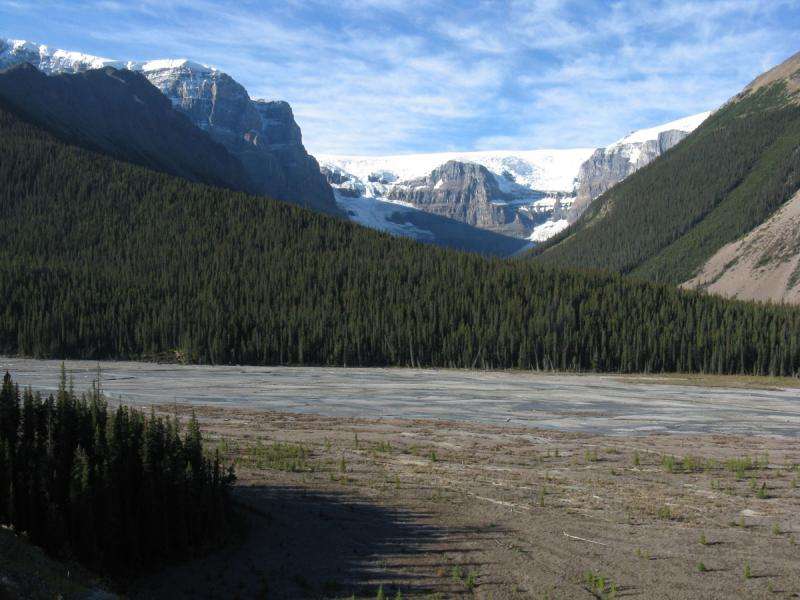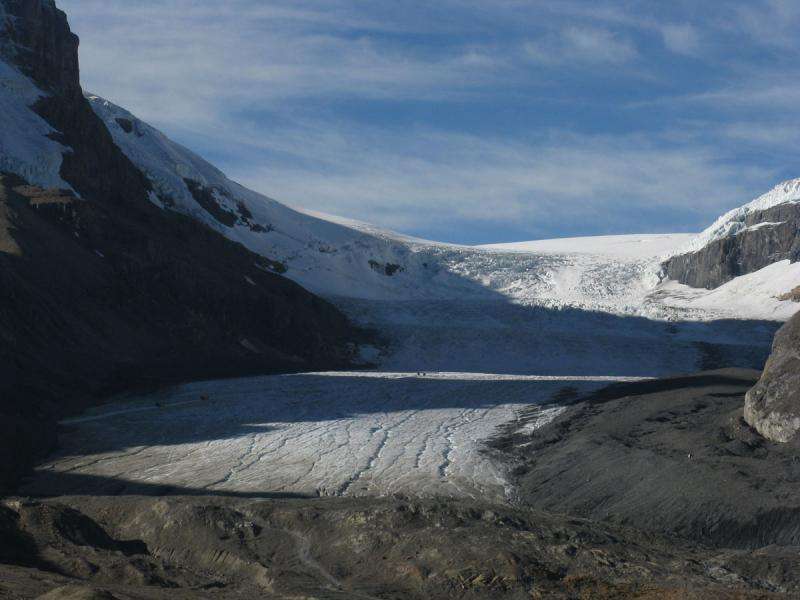September 23, 2015 report
Canadian River used for oilsands extraction may be at risk from drought

(Phys.org)—A trio of researchers with the University of Regina and University of Western Ontario, both in Canada, has found that a history of drought in the areas that feed the Athabasca River indicates that droughts are likely in the future, perhaps putting oilsands mining in jeopardy. In their paper published in Proceedings of the National Academy of Sciences, David Sauchyn, Jeannine-Marie St-Jacques, and Brian Luckman describe their study of tree rings in the area and what doing so revealed about the history of rainfall there.
Scientists already know that less water is flowing today in the Athabasca River than in years past, due to less glacial melt, which in turn is due to global warming. In this new effort, the researchers found that the area appears to be susceptible to future drought as well because droughts have occurred periodically throughout the past 900 years.
Water from the river is used to extract oil from sand—it takes approximately 3.1 barrels of it to get just one barrel of oil—records indicate that oilsand mining accounts for approximately 72 percent of the water pulled from the river. Such extractions are regulated by the Canadian government, but, the researchers note, those regulations are based on data that only goes back to the 1950's. To get a better picture of the future, the researchers fanned out and took core samples from trees throughout the area, some of which dated back 1111 years.
In analyzing the data, the researchers first compared their data with actual rainfall records dating back to the 1950's and found them to be about the same. Then they looked at data going back over nine hundred years of history. They discovered that the area experienced a drought at least once a century ranging from a short period to up to fifty years.
Those running the oilsands mining operations are currently allowed to take 4.4 percent of the water flowing through the area near the mine, though they never use near that much—typically it is just a fraction of that. But that could change in a drastic way, the researchers note if the area were to experience a severe drought—they believe it would be better to look into the rules now, while there is plenty of water, rather than later, during the middle of a drought.

More information: Long-term reliability of the Athabasca River (Alberta, Canada) as the water source for oil sands mining, David J. Sauchyn, DOI: 10.1073/pnas.1509726112
Abstract
Exploitation of the Alberta oil sands, the world's third-largest crude oil reserve, requires fresh water from the Athabasca River, an allocation of 4.4% of the mean annual flow. This allocation takes into account seasonal fluctuations but not long-term climatic variability and change. This paper examines the decadal-scale variability in river discharge in the Athabasca River Basin (ARB) with (i) a generalized least-squares (GLS) regression analysis of the trend and variability in gauged flow and (ii) a 900-y tree-ring reconstruction of the water-year flow of the Athabasca River at Athabasca, Alberta. The GLS analysis removes confounding transient trends related to the Pacific Decadal Oscillation (PDO) and Pacific North American mode (PNA). It shows long-term declining flows throughout the ARB. The tree-ring record reveals a larger range of flows and severity of hydrologic deficits than those captured by the instrumental records that are the basis for surface water allocation. It includes periods of sustained low flow of multiple decades in duration, suggesting the influence of the PDO and PNA teleconnections. These results together demonstrate that low-frequency variability must be considered in ARB water allocation, which has not been the case. We show that the current and projected surface water allocations from the Athabasca River for the exploitation of the Alberta oil sands are based on an untenable assumption of the representativeness of the short instrumental record.
Journal information: Proceedings of the National Academy of Sciences
© 2015 Phys.org



















